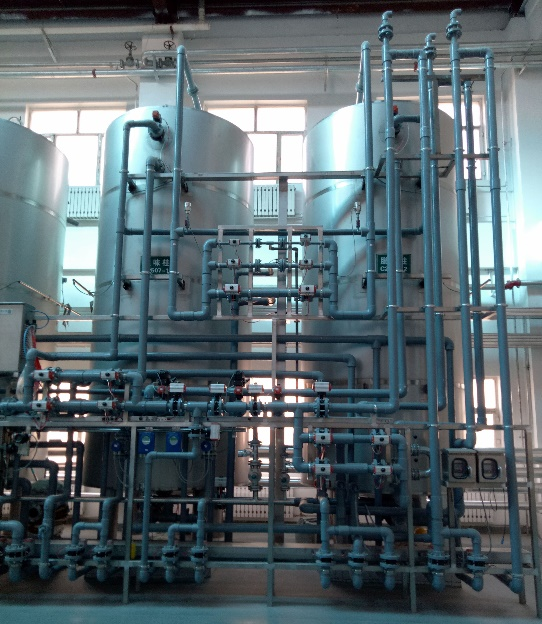产品展示PRODUCTS SHOW
首页>产品展示>Main technologies

Automatic deodorization system
1 Introduction
Preparation before operation
A) Check whether the switch of pipeline and valve is normal.
B) Check whether the water and regenerated liquid required by the system are sufficient.
C) Check whether the pump and instrument work normally.
D) Check whether the air compressor is running normally.
Taking the production of maltose as an example to introduce the operation of deodorization column.
1) Feeding The liquid enters the column through the feeding valve, and the water in the column is discharged through the discharge valve. The liquid maltose with a concentration of 0-5% is discharged into the sweet water tank, and the liquid maltose with a concentration of 5% - 20% is returned to the pre delivery tank.
2) Production The feed valve and discharge valve are opened at the same time, and the feed liquid is purified by deodorizing resin before going to the next tank.
3) Take in air The compressed air is used to discharge the liquid in the column into the evaporation feed tank.
4) Take in water the water makes the feed liquid with 5% - 20% concentration discharge into the ion exchange feed tank,and 0-5% concentration discharge into the sweet water tank. Finally, the flushing water is discharged through the blowdown valve.
5) Flush tank top The condensate enters the column through the spray water inlet valve, and the inner wall of the column top is cleaned to prevent contamination. The sewage is discharged through the backwash blowdown valve, and the pressure in the column is discharged after the flushing.
6)Take in air The compressed air enters through the inletat the bottom of the column, and the backwash discharge valve remains open. Theresin, protein and other sundries are turned up with compressed air, which is conducive to resin backwashing.
7) Backwash The backwash water enters through the regeneration valve at the bottom of the column and is discharged from the blowdown valve. Backwashing is to wash out the protein and other impurities in the resin to ensure that the resin is clean.
8) Rinsing The rinsing water enters through the water inlet valve and is discharged through the blowdown regeneration valve. It's also called washing resin. Pay attention to control the liquid level in the column.
9) Alkali regeneration: alkali enters to regenerate resin and soaks for about 3h to ensure regeneration effect.
10) Slow washing: wash the resin with water to make the pH 8-9.
11) Acid regeneration: acid enters to regenerate resin and soaks for about 3h to ensure regeneration effect.
12) Slow washing Wash the resin with water to make the pH 4-6.
13) Quick washing Condensate can be used in the early stage of quick washing, and pure water can be used in the later stage to ensure the resin is clean. The pH is 4.5-6.0 EC < 10 at the end.
14) Take in air The compressed air enters the column to drain the water to avoid reducing the concentration of the feed liquid. Then adjust the pressure inside the column to be consistent with that outside the column.






